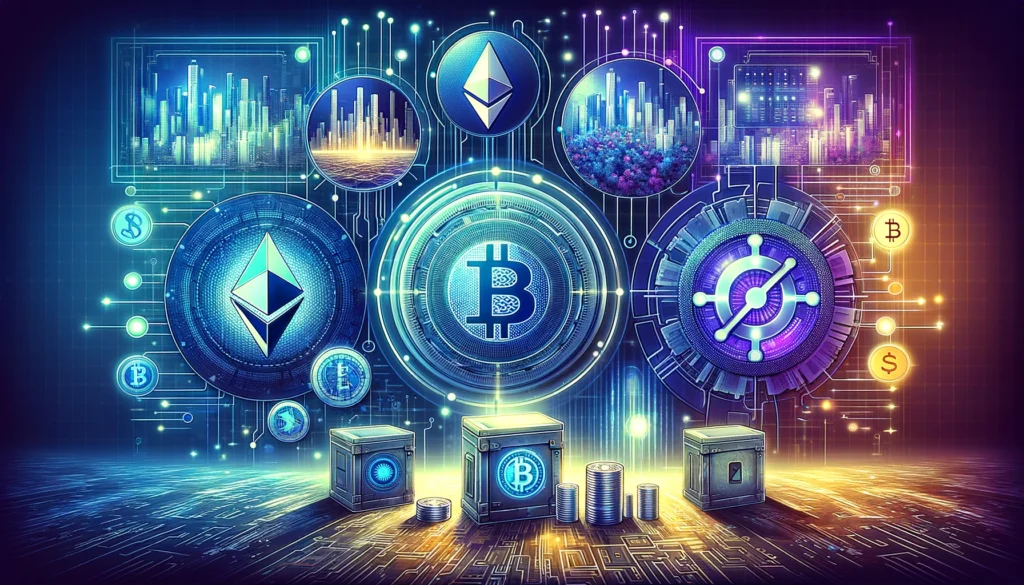Decentralized Finance, or DeFi, is a revolutionary concept that is reshaping the way we think about financial services. Unlike traditional finance, which relies on central institutions like banks, DeFi operates on a decentralized network, typically using blockchain technology. This innovation began as an offshoot of the cryptocurrency movement and has grown into a comprehensive financial ecosystem. DeFi challenges the traditional, centralized financial system by empowering individuals with peer-to-peer transactions, ensuring greater transparency, efficiency, and accessibility.
The Birth and Evolution of DeFi
The origins of DeFi are deeply intertwined with the inception of blockchain and cryptocurrencies, particularly Ethereum, which introduced the concept of smart contracts. These are self-executing contracts with the terms of the agreement directly written into lines of code. The advent of smart contracts was a significant milestone, as it enabled more complex financial transactions to occur in a trustless, decentralized environment. This technological breakthrough laid the groundwork for the first DeFi applications, which emerged around 2018. Since then, DeFi has seen exponential growth, with billions of dollars now locked in its protocols.
Why DeFi Matters

DeFi is not just a technological novelty, it represents a paradigm shift in finance. For the first time, individuals have the ability to access and participate in a wide range of financial services – from banking to lending, to insurance – without the need for traditional financial intermediaries. This democratization of finance has significant implications, especially for those in underserved or unbanked regions of the world. Moreover, the transparency and security afforded by blockchain technology address many of the trust issues prevalent in traditional finance.
Key Components of DeFi
In understanding how DeFi is changing the financial landscape, it’s essential to delve into its key components: smart contracts and decentralized applications (DApps). These elements are the cornerstones upon which the entire DeFi ecosystem is built.
Smart Contracts: The Heart of DeFi
Smart contracts are automated agreements that execute when predetermined conditions are met, without the need for intermediaries. These digital contracts run on blockchain networks, with Ethereum being the most popular platform due to its robust programming capabilities. Smart contracts have opened up a world of possibilities in finance, enabling everything from automated loans to interest-earning savings accounts, all without the need for a bank or other central authority.
For example, in a DeFi lending platform, a smart contract might be programmed to automatically adjust interest rates based on the supply and demand of funds. This not only ensures efficiency but also creates a transparent and trustless environment for users.
Smart contracts in DeFi allow for the creation of programmable and automated financial services. This automation brings efficiency and precision to financial transactions that traditional banking systems, with their reliance on manual processes and intermediaries, cannot match. From automatic interest payments to self-executing loans, DeFi provides innovative financial products that are both flexible and efficient.
Decentralized Applications (DApps): Bringing DeFi to Life
DApps are applications that run on a decentralized network, supported by smart contracts. They are the user-facing side of DeFi, providing interfaces for individuals to interact with the underlying blockchain technology. Unlike traditional apps, which are controlled by single entities, DApps operate in a distributed manner, reducing the risks of censorship and downtime.
One practical application of DApps in DeFi is decentralized exchanges (DEXs). These platforms allow users to trade cryptocurrencies directly with one another, without the need for a central authority to facilitate the trades. This not only enhances security (as funds are not held by a third party) but also increases the accessibility of financial markets.
Yield Farming and Liquidity Mining

Yield farming and liquidity mining have become popular ways for users to earn returns on their crypto investments. In these practices, users provide liquidity to DeFi platforms in exchange for interest or platform-specific tokens. While potentially lucrative, these activities also come with high risk, particularly in terms of market volatility and impermanent loss.
The Synergy of Smart Contracts and DApps
The combination of smart contracts and DApps forms the backbone of the DeFi ecosystem. Together, they enable a wide array of financial services to be conducted in a decentralized, transparent, and secure manner. This synergy is fundamentally altering how financial transactions are conducted, paving the way for a more inclusive and efficient financial system.
Impact on Traditional Banking
The rise of DeFi poses a unique challenge to traditional banking, signaling a shift in how financial services may be delivered and consumed in the future. This section will contrast DeFi with conventional financial systems to underscore the transformative impact of decentralized finance.
Accessibility: Breaking Down Barriers
One of the most significant advantages of DeFi over traditional banking is its accessibility. DeFi platforms operate 24/7 and are accessible to anyone with an internet connection, removing geographical barriers and the need for a bank account. This is especially crucial for the unbanked or underbanked populations, who now have the opportunity to access financial services that were previously out of reach. In contrast, traditional banking often involves bureaucratic hurdles, limited operating hours, and may not be accessible in remote or impoverished areas.
Transparency and Control
DeFi platforms, built on blockchain technology, offer unparalleled transparency compared to traditional banking systems. Every transaction on a blockchain is recorded on a public ledger, making it possible to trace the movement of funds and ensuring a level of transparency that is virtually impossible in traditional banking. Furthermore, DeFi gives users full control over their assets without the need for intermediaries, a stark contrast to traditional banking, where your funds are managed by the institution.
Efficiency and Innovation
The absence of intermediaries in DeFi not only reduces transaction costs but also significantly increases the speed of transactions. Traditional banking systems, on the other hand, can be slow due to the numerous checks and balances, paperwork, and reliance on intermediary financial institutions. Additionally, the DeFi space is characterized by rapid innovation, constantly introducing new financial products and services, whereas innovation in traditional banking is often slower due to regulatory constraints and institutional inertia.
The Challenge of Trust and Stability
Despite its advantages, DeFi is not without challenges. Traditional banks, being regulated entities, offer a sense of trust and stability that DeFi has yet to fully establish. Issues such as smart contract vulnerabilities, the volatility of cryptocurrencies, and the nascent regulatory landscape of DeFi contribute to a perception of higher risk compared to traditional banking.
One of the primary risks in DeFi stems from the technology itself. Smart contracts are only as reliable as the code they are written in. Bugs or vulnerabilities in smart contract code can lead to significant financial losses. For instance, there have been instances where flaws in smart contract design have been exploited, leading to the loss of millions of dollars in cryptocurrency. Users must exercise due diligence and understand that DeFi platforms are not infallible.
Enhanced Security and Privacy
DeFi leverages blockchain technology, which offers enhanced security and privacy compared to traditional financial systems. Transactions in DeFi are secured by cryptography, making them tamper-proof and highly resistant to fraud. Furthermore, the decentralized nature of blockchain reduces the risk of centralized points of failure, such as data breaches that are common in traditional banking systems.
Real-World Asset Tokenization
Another emerging application of DeFi is the tokenization of real-world assets, such as real estate or art. By representing these assets as tokens on a blockchain, they can be easily divided, traded, or used as collateral in a decentralized manner. This application has the potential to significantly increase liquidity and access to various asset classes.
Mainstream Adoption and Integration
As DeFi continues to mature, it is poised for more widespread adoption. This could involve greater integration with traditional financial systems, as well as an increase in the number of everyday users who turn to DeFi for their financial needs. We might see more partnerships between DeFi platforms and established financial institutions, bridging the gap between traditional and decentralized finance.
The ongoing development of blockchain technology will likely lead to more efficient, secure, and scalable DeFi platforms. Innovations such as Layer 2 solutions and cross-chain interoperability could address current limitations in terms of transaction speeds and network congestion, making DeFi platforms more user-friendly and robust.
To attract a broader audience, DeFi platforms will likely place a greater emphasis on improving user experience. This could involve more intuitive interfaces, better educational resources, and enhanced customer support, making DeFi more accessible to the average person.
Conclusion
As we have explored throughout this guide, Decentralized Finance (DeFi) is more than just a passing trend in the cryptocurrency world, it’s a transformative movement that is reshaping the financial landscape. By leveraging blockchain technology, DeFi challenges traditional financial paradigms, offering a more inclusive, transparent, and efficient system.

